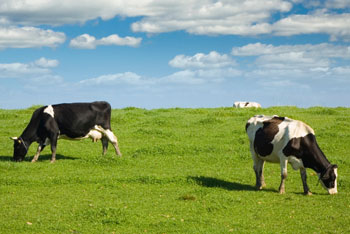 Dec. 30, 2014 – Commercial general liability insurance policies do not cover the damage caused by septage used as farm fertilizer, the state supreme court has ruled, classifying “septage” as a “pollutant” that isn’t covered under pollution exclusions.
Dec. 30, 2014 – Commercial general liability insurance policies do not cover the damage caused by septage used as farm fertilizer, the state supreme court has ruled, classifying “septage” as a “pollutant” that isn’t covered under pollution exclusions.
Dairy farmers Fred and Tina Preisler (the Preislers) hired Kuettel’s Septic Service LLC (Kuettel’s Septic) to spread septage on the Preislers’ farm as fertilizer. Kuettel’s Septic obtained permits from the Wisconsin DNR and applied septage for several years.
But in 2008, the Preislers’ cattle starting dying. Testing showed elevated nitrates in their well supply. The Preislers sued Kuettel’s Septic and a subcontractor, alleging negligence in applying and storing septage. They also said Kuettel’s Septic was strictly liable because septage application and storage is an abnormally dangerous activity.
The parties’ insurers joined the suit. The applicable insurance policies, which covered commercial business activity, had pollution exclusion clauses that excluded liability coverage for damages caused by the discharge or release of “pollutants.”
The insurers argued that coverage was excluded since septage is a “pollutant” that caused the losses. Now aligned, Kuettel’s Septic and the Preislers argued that septage is not a pollutant when used as a farm fertilizer to enhance the farm’s operations.
The circuit court granted summary judgment to the insurers and the appeals court affirmed. Those courts said the pollution exclusion clauses applied to septage. In Preisler v. Kuettel’s Septic Service LLC, 2014 WI 135 (Dec. 30, 2014), a 6-1 majority of the Wisconsin Supreme Court affirmed in an opinion by Justice Patience Roggensack.
“We conclude that a reasonable insured would understand that decomposing septage is a ‘contaminant’ and therefore, a ‘pollutant’ as defined in the policies when it has decomposed and seeps into a water supply,” Justice Roggensack wrote.
The majority noted that handling, storing, and applying septage is regulated by the Wisconsin DNR and the federal EPA, noting that high levels of nitrates can be dangerous to humans and livestock when they enter the water supply.
In addition, the court noted that septage is primarily composed human urine and feces, contaminants considered “waste” and excluded by the pollution exclusion clauses.
Dissent and Concurrence
Justice Ann Walsh Bradley filed a concurring opinion. She agreed that septage is a “pollutant,” but wrote separately to question the majority’s analysis of what constitutes an “occurrence” for purposes of insurance policies that cover “occurrences.”
“[T]he majority’s occurrence discussion is problematic,” Bradley wrote. “By creating unclear, unnecessary, and inconsistent precedent, the court does not live up to its obligation to provide a clear and concise articulation of a legal standard.”
Chief Justice Shirley Abrahamson dissented. “The majority opinion’s approach to the pollution exclusion clauses in the instant case unnecessarily departs from precedent, undercuts the limiting principles our prior cases have applied to pollution exclusion clauses, and further confuses this murky area of the law,” the chief justice wrote.
Abrahamson said that a reasonable person in the position of the septic companies would not consider septage a “pollutant,” as that term is used in the policy.
“[Septage] is a fertilizer used to enrich the soil,” she wrote. “When it is used to enrich the soil, it is no longer waste, an irritant, or a contaminant.”
